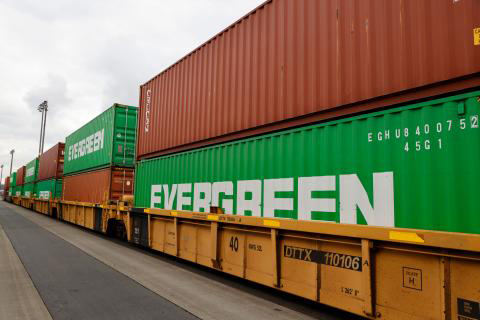
The Northwest Seaport Alliance—the marine cargo operating partnership between the Seattle and Tacoma seaports—has launched a feasibility study to evaluate offshore wind business opportunities, plus recently inaugurated a new intermodal rail connection.
The study, which was publicly announced March 18, aims to, according to the NWSA, assist the Seaport Alliance in “positioning the gateway to support the burgeoning offshore wind supply chain market.”
The study is tied to Biden administration having set a goal of 30 gigawatts (GW) of power produced by offshore wind by 2030, and an ultimate goal of 110 GW by 2050. To meet the supply chain needs of current federal offshore wind goals, industry reports indicate that roughly $36 billion would be needed in domestic port infrastructure development.
Port infrastructure and capacity have been identified as among the leading constraints in the offshore wind (OSW) supply chain, creating significant market interest and generating investment opportunities for ports across the U.S.
“With attention and recent funding from the (Washington) State Legislature, now is the perfect time to evaluate potential business opportunities,” Port of Tacoma President and NWSA Co-Chair Kristin Ang said. “This assessment is the first step in ensuring the NWSA is equipped to meet future market needs in the OSW supply chain.”
According to the Seaport Alliance, the study will take a broad look at NWSA facilities, the various OSW components, and identify which port facilities are suited for various aspects of the OSW supply chain.
“The study will highlight opportunities for investment in NWSA facilities to meet market demand,” the NWSA said.
“Offshore wind components are large, heavy elements that require purpose-built port infrastructure, heavy-lift equipment, and access to deep, navigable water,” Shane Phillips, a Senior Civil and Coastal Engineer with the firm Moffatt & Nichol said.
“The NWSA is well positioned to play a critical role in the development of the OSW supply chain as there is a shortage of suitable port infrastructure on the West Coast to meet renewable energy and OSW deployment goals at the federal and state levels,” he added.
In a statement, Port of Seattle Commission President and NWSA Co-Chair, Hamdi Mohamed called the study “a multi-faceted opportunity to diversify cargo, increase investment in our terminals, and participate in the transition to a clean energy economy.”
“We look forward to working with Moffatt Nichols and reviewing the results of this study to better understand our role as a leading cargo gateway in this market,” she added.
Rail Connection
In other news, the NWSA in February welcomed the first intermodal rail connection with Tri Cities Intermodal to the Puget Sound gateway. The new intermodal service marks the latest milestone in the Seaport Alliance’s Inland Rail Hub Strategic Initiative.
“The introduction of an intermodal rail connection between Eastern Washington and the NWSA gateway helps address the growing demand for export capacity in the region, allowing shippers to efficiently move their products to overseas markets,” the Seaport Alliance explained in a statement.
The first loaded train arrived at Pierce County Terminal in Tacoma on Feb. 8, carrying containerized hay bound for China. The hay then set sail aboard the Taiwan-flagged container vessel Ever Lucid on Feb. 13.
“We appreciate the significant energy (intermodal transport and supply chain management company) Tri-Cities Intermodal has invested in establishing this new intermodal ramp,” Mohamed said. “The service will provide an efficient transportation option for Washington exporters to seamlessly access NWSA marine terminals and global markets.”
In addition to Tri-Cities Intermodal, the Union Pacific Railroad, Everport Marine Terminals and Evergreen Marine Corp. have been critical partners in the successful launch of this new service.
“We look forward to supporting the growth of this new service,” Ang said. “Not only will it increase U.S. export opportunities, but also reduce truck traffic and environmental impacts caused by diesel trucks in our harbors.”
